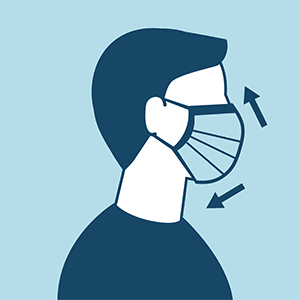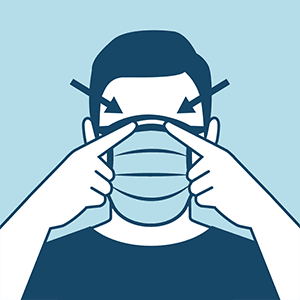 |
| How to Wear Face Cover |
#15,170
As we discussed yesterday in Masking Our COVID-19 Concerns, there has been a growing call for Americans to wear some sort mask in public during the pandemic, if for no other reason than to prevent asymptomatic carriers from spreading the virus.
After much debate, late yesterday the CDC issued `Face Cover' recommendations for the general public, along with some easy tutorials (below) on how to make these items at home.Although a homemade face cover probably provides very limited protection to the wearer, it can reduce the transmission of the virus to others and it can remind us not to touch our face. They are not a substitute, however, for social distancing (staying 6 feet apart), handwashing, or staying home as much as possible.
While a imperfect solution, as part of a layered, NPI approach, they can help reduce community transmission of the virus. If nothing else, by wearing one, you are showing respect for the health and welfare of others, and are setting a good example at the same time.
Use of Cloth Face Coverings to Help Slow the Spread of COVID-19
Printer friendly
Face coverings should—
- fit snugly but comfortably against the side of the face
- be secured with ties or ear loops
- include multiple layers of fabric
- allow for breathing without restriction
CDC on Homemade Face Covers
- be able to be laundered and machine dried without damage or change to shape
CDC recommends wearing cloth face coverings in public settings where other social distancing measures are difficult to maintain (e.g., grocery stores and pharmacies), especially in areas of significant community-based transmission.
CDC also advises the use of simple cloth face coverings to slow the spread of the virus and help people who may have the virus and do not know it from transmitting it to others. Cloth face coverings fashioned from household items or made at home from common materials at low cost can be used as an additional, voluntary public health measure.
Cloth face coverings should not be placed on young children under age 2, anyone who has trouble breathing, or is unconscious, incapacitated or otherwise unable to remove the mask without assistance.
The cloth face coverings recommended are not surgical masks or N-95 respirators. Those are critical supplies that must continue to be reserved for healthcare workers and other medical first responders, as recommended by current CDC guidance.
Should cloth face coverings be washed or otherwise cleaned regularly? How regularly?
Yes. They should be routinely washed depending on the frequency of use.
How does one safely sterilize/clean a cloth face cover?
A washing machine should suffice in properly washing a face covering.
How does one safely remove a used face cover?
Individuals should be careful not to touch their eyes, nose, and mouth when removing their face covering and wash hands immediately after removing.




